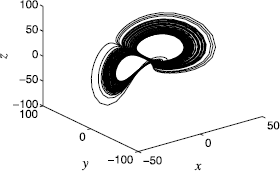
He considered a continuous dynamical system of the form, , where is a -smooth vector field, for some. In the study of a dynamical system, specially of nonlinear models, one of the objectives is to determine the stability conditions of equilibrium points or fixed points.Īccording to Osipenko, in his excellent paper titled “Center Manifolds”, Lyapunov, in his dissertation “General Problem on Stability of Motion,” was perhaps one of the pioneers in the study of the stability of dynamical systems, creating the foundations of the modern theory of the stability in dynamical systems. In addition, a conjecture about the global stability of the nontrivial fixed points of the Ricker competition model is presented. A nonlinear model in population dynamics is studied, namely, the Ricker competition model of three species. In particular, the techniques for studying the stability of nonhyperbolic fixed points via the centre manifold theorem are presented. A survey on the conditions of local stability of fixed points of three-dimensional discrete dynamical systems or difference equations is provided. Hope this post on Stable unstable and neutral equilibrium is helpful for students. So for slight displacement, the force should take away the body from the equilibrium position Potential energy diagram for the Stable Equilibriumįor unstable equilibrium, the second derivative should be Negative. So for slight displacement, the restoring force should act on the body Now For equilibrium, Force should be zeroįor stable equilibrium, the second derivative should be positive. If only conservative forces are acting on the system, then we can define equilibrium in terms of Potential energy also If no force acting then neutral equilibrium if the force is away i,e direction is away from the equilibrium position then it is an unstable equilibrium. If the force is restoring i,e direction is towards the equilibrium position then it is a stable equilibrium. (3) We will need to find the direction of the force on the body when slightly displaced to find out if the equilibrium is stable, unstable, or neutral. This looks to be very clear from the example ball in the valley if the center of gravity is tilted below on displacement from the equilibrium position, then the body will not come back to the normal position. So if the center of gravity is tilted above on displacement from the equilibrium position, then the body will come back to the lowest point. (2) The body always tries to go to the lowest point for the center of gravity. The higher it is the more likely the object is to topple over if it is pushed. The lower the center of gravity (G) is, the more stable the object. (1) The position of the center of gravity of an object affects its stability. (4) A ball at the top of a rounded hill.A small displacement of the ball results in a force that moves the ball away from the equilibrium point so that equilibrium cannot be maintained. (2) thin rod standing vertically is slightly disturbed from its position it will not come back to its original position. (1) pencil standing on its point or a stick in vertically standing position. Unstable equilibrium: A body is in unstable equilibrium if it does comes back to its normal position on slight displacement A small displacement will not have any impact on the ball. Neutral equilibrium: If a ball is pushed slightly to roll, it will neither come back to its original nor it will roll forward rather it will remain at rest. If the clone is tilted slightly, it comes back to its normal position

(3) A cone with a flat surface on the horizontal floor. If the book is lifted from one edge and then allowed to fall, it will come back to its original position (2)A book lying on a horizontal surface is an example of stable equilibrium. a small displacement of the ball toward either side will result in a force returning the ball to the original position.


(1) A ball in the valley between two hills. Stable Equilibrium: A body is in stable equilibrium if it comes back to its normal position on slight displacement


 0 kommentar(er)
0 kommentar(er)
